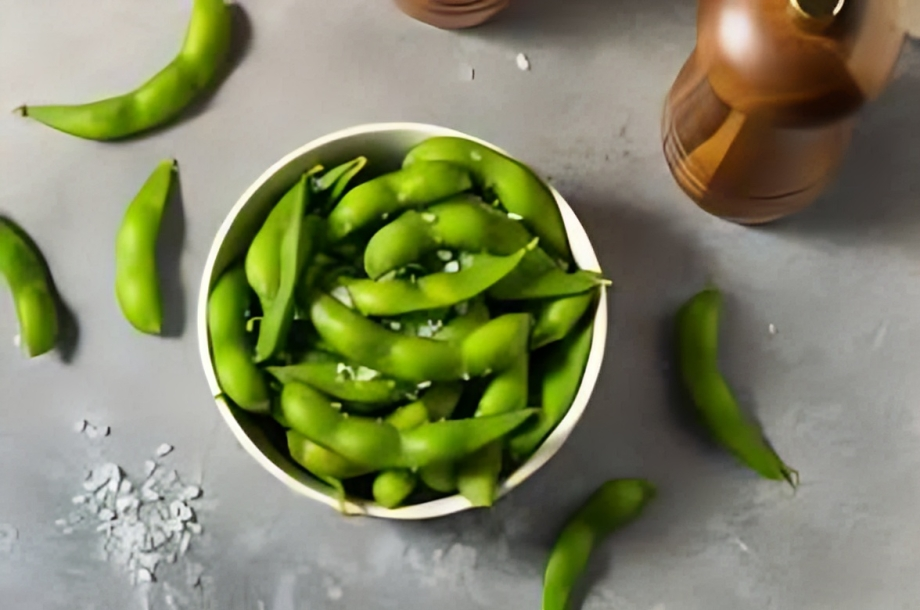
Many people dealing with IBS or digestive sensitivities often ask: edamame fodmap Since edamame is a popular snack, especially in Asian cuisine, it’s important to understand whether it fits into a gut-friendly diet.
In this detailed guide, we’ll explore the nutritional profile of edamame, how it relates to the FODMAP diet, recommended portion sizes, and tips for including it safely.
What is Edamame?
Edamame refers to immature soybeans harvested before fully ripening. Unlike mature soybeans, they are softer, sweeter, and easier to digest. Edamame is usually served boiled or steamed and sprinkled with a pinch of salt.
Nutritionally, edamame is rich in protein, fiber, folate, iron, and essential vitamins, making it a healthy plant-based food. But because it’s a legume, many people with IBS worry about whether it triggers symptoms.
What Are FODMAPs?
FODMAPs are fermentable carbohydrates (Fermentable Oligo-, Di-, Monosaccharides And Polyols). These short-chain carbs are poorly absorbed in the small intestine and move into the large intestine, where gut bacteria ferment them.
For people with IBS, this process can lead to bloating, gas, abdominal pain, and changes in bowel movements. That’s why the low FODMAP diet was developed — to identify and limit foods that may cause flare-ups.
Is Edamame Low FODMAP?
The big question is: Does edamame fit into the low FODMAP diet?
The answer is: Yes, in the right portion size.
According to Monash University research and leading digestive health experts:
- A small serving of ½ cup (about 75g) shelled edamame is low FODMAP and generally well tolerated.
- Larger servings may contain more galacto-oligosaccharides (GOS), which can trigger IBS symptoms.
- At portions above ~195g, edamame shifts into the moderate FODMAP category, and at 250g or more, it becomes high FODMAP.
NutritDiet also explains this in detail: edamame fodmap.
Why Edamame is Lower in FODMAPs than Mature Soybeans
Mature soybeans are high in FODMAPs because they contain large amounts of GOS (a type of oligosaccharide). Since edamame beans are harvested earlier, they contain fewer of these fermentable carbs.
This is why edamame can be tolerated in moderation while foods made from mature soy (such as soy flour or soy milk from whole beans) often cause digestive distress.
Portion Size Matters
Here’s a breakdown of edamame FODMAP levels depending on serving size:
| Portion size (shelled) | FODMAP level | Tolerance |
|---|---|---|
| ≤ 75g (about ½ cup) | Low FODMAP | Safe for most people |
| ~195g | Moderate FODMAP | May cause symptoms in sensitive individuals |
| ≥ 250g | High FODMAP | Likely to trigger IBS symptoms |
This shows that edamame can absolutely be included in a balanced low FODMAP diet — as long as you stick to smaller servings.
Health Benefits of Edamame
Beyond being low FODMAP in small portions, edamame offers many health benefits:
- Plant-Based Protein – A great protein source for vegetarians and vegans.
- Fiber-Rich – Helps with digestion and satiety (though too much can cause bloating if you exceed FODMAP limits).
- Rich in Vitamins & Minerals – Provides folate, vitamin K, magnesium, and iron.
- Heart Health – Contains isoflavones and healthy fats that may support cardiovascular health.
- Weight Management – High in protein and fiber, keeping you fuller for longer.
Tips for Eating Edamame on a Low FODMAP Diet
- Stick to the safe portion (½ cup shelled).
- Avoid FODMAP stacking. If you eat edamame with other high FODMAP foods, the combined effect can trigger symptoms.
- Watch seasonings. Garlic, onion, or high-FODMAP sauces can make an otherwise safe snack problematic.
- Choose plain edamame. Steamed or boiled with a little salt is the safest option.
- Track your symptoms. Keep a food diary to see how your body responds.
Edamame vs Other Soy Products
Soy foods vary widely in their FODMAP content. Here’s how edamame compares:
- Edamame – Low FODMAP in small servings.
- Firm Tofu – Usually low FODMAP because the FODMAPs are removed with liquid.
- Silken Tofu – High FODMAP due to higher GOS content.
- Soy Milk (whole bean) – High FODMAP and often problematic.
- Soy Protein Isolate – Typically low FODMAP and used in protein powders.
This comparison shows why edamame stands out as a safe, nutritious, and gut-friendly soy option.
Medical Considerations
While edamame is safe for most people with IBS in small amounts, some may still experience symptoms. Individual tolerance levels vary widely, so it’s best to:
- Introduce edamame gradually into your diet.
- Consult a dietitian if you’re following the low FODMAP diet.
- Avoid overeating, even with safe foods, as large volumes of fiber can stress the gut.
Final Thoughts
So, is edamame low FODMAP?
✅ Yes, if eaten in moderation (around ½ cup shelled beans).
Edamame is a nutritious, protein-rich snack that fits into a low FODMAP diet when portion sizes are controlled. It’s lower in fermentable carbs compared to mature soybeans, making it a great choice for those with IBS or digestive sensitivities.
If you enjoy snacking on edamame or adding it to salads, stir-fries, or soups — you can keep it in your diet safely as long as you follow portion guidelines.
For a more detailed breakdown, you can check out this guide: edamame fodmap.


